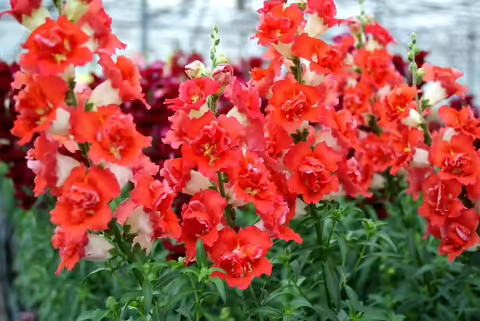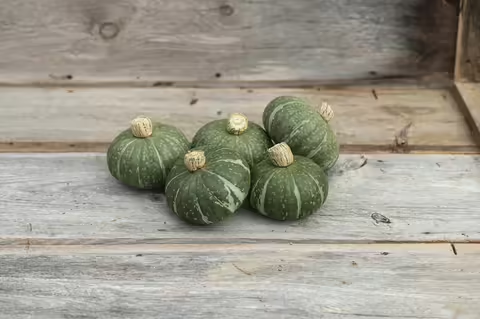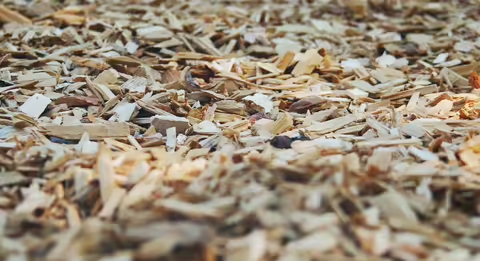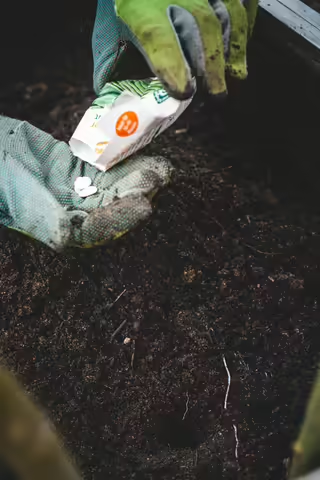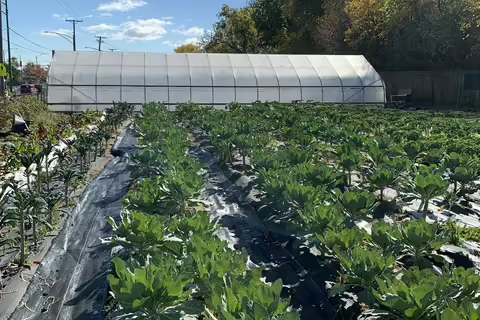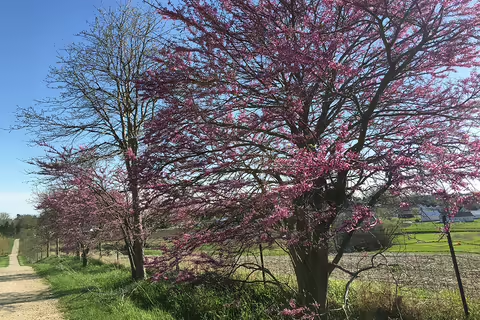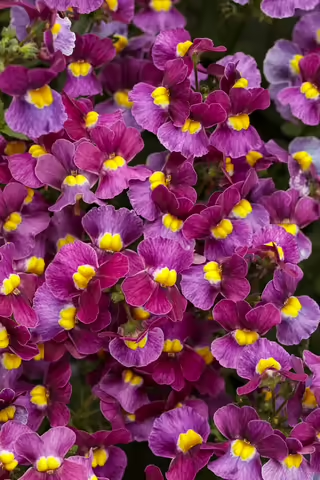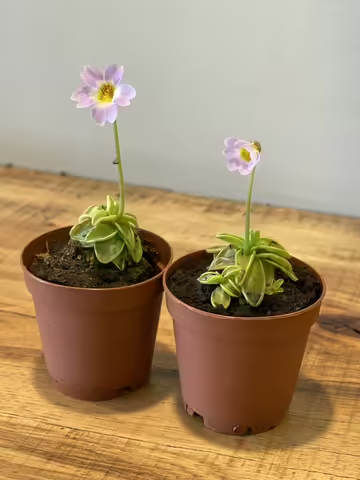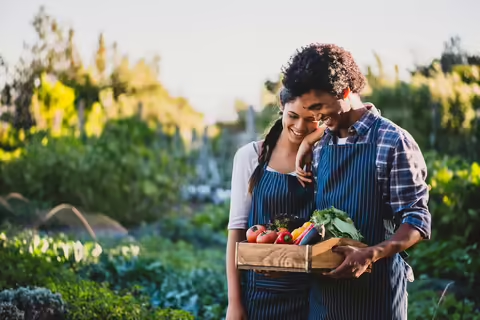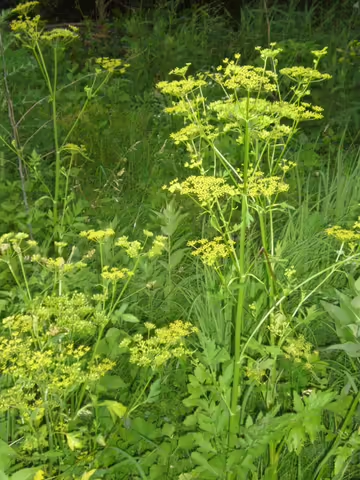Grow the best new flower and vegetable varieties with 2023 All-America Selection Winners
By Bruce J. Black
Another Illinois winter comes to a close after rain, thunderstorms, and snow replenish the soil moisture. A welcome cure for those winter blues has been the arriving garden catalogs and planning for spring. What new garden challenge is your goal for this year? A theme or color scheme? Floral, woody, or edible additions? Whichever way you plan it, always leave room for the unexpected when shopping for plants.
Review your garden records from previous years to aid in the planning for the new spring. When planning your new theme, look for plants that are suited for USDA hardiness zone 5 or colder. Using a plant map, think about where you could incorporate your theme or where your new plants should go. My starting place is the new additions of All-America Selections.
All-America Selections is a non-profit organization that releases several trialed plants each year as AAS Winners. AAS tests new varieties every year at private and public trial sites located around the U.S. and Canada. Currently, there are four trial locations in Illinois, with three northern and one central.
Independent judges, who are professional horticulturists in geographically diverse areas, evaluate trial entries against comparison plants. The results and observations are compiled, and winners are chosen. For the best plants suited to Illinois residents, look for Great Lakes winners or National winners on the AAS Winners lists.
This year, there are 11 AAS winners, six of which are suited for Illinois – three vegetables and three flowers.
Vegetables
- Pepper jalapeno San Joaquin F1 (Capsicum annuum var. San Joaquin F1): This National Vegetable Winner is a determinate, thick-walled jalapeno setting about 50 fruits per plant. Good for preserving or roasting, holds taste and firmness until harvest. 2,500 to 6,000 Scoville units. It has 60 days to harvest from transplant.
- Squash kabocha Sweet Jade F1 (Cucurbita maxima var. Sweet Jade F1): This National Vegetable Winner is a single-serving-sized, fall harvest squash. High yielding, 1- to 2-pound squash. Jade colored outside with deep orange flesh perfect for an edible bowl. It has 85 days to harvest from transplant.
- Tomato Zenzei F1 (Solanum lycopersicum var. Zenzei): This Regional Vegetable Winner is a high-yielding, early-maturing Roma, plum type tomato. Its uniform, fleshy, easy-to-harvest tomatoes are good fresh or for preservation, and born on bushy indeterminate plants. Less disease issues than other tomatoes. It has 70 to 80 days to harvest from transplant.
Flowers
- Coleus Premium Sun Coral Candy (Solenostemon scutellarioides var. Premium Sun Coral Candy): A National Winner, this is the first seed coleus to be an AAS Winner. This flower is a compact, multicolored foliage plant with narrow, serrated leaves that holds color well in full sun. Perfect for a 14” to 16” container or hanging basket.
- Salvia Blue by You (Salvia hybrida var. Blue by You): This National Winner is a perennial salvia with blue flowers blooming up to two weeks earlier. It is both heat tolerant and winter hardy. Blooms late spring into fall with deadheading of spent blooms. It is pollinator friendly and not deer or rabbit friendly.
- Snapdragon DoubleShot™ Orange Bicolor F1 (Antirrhinum majus var. DoubleShot™ Orange Bicolor F1): This National Winner is an intermediate-height, double-flowered annual snapdragon. It has warm shades of orange and orange-red, that transition to dusty shades on strong stems producing more branching and a higher flower count. Perfect for containers or in-ground plantings.
Looking for something else to fill in your landscape and gardens? The website all-americaselections.org contains a list of all past vegetables and flower winners since its founding in 1933.
For more information about gardening, check out the Illinois Extension Horticulture website at extension.illinois.edu/plants or our YouTube channel go.illinois.edu/UniversityOfIllinoisExtensionHorticulture.
For more research-based information on gardening, connect with your local Illinois Extension county office at go.illinois.edu/ExtensionOffice.
Photos
- Snapdragon DoubleShot™ Orange Bicolor F1 (Antirrhinum majus var. DoubleShot™ Orange Bicolor F1) is a National Winner flower with beautiful shades or orange and red. Photo credit All-America Selections.
- Squash kabocha Sweet Jade F1 (Cucurbita maxima var. Sweet Jade F1) is a 2023 National Vegetable Winner. Photo credit All-America Selections.
Bruce J. Black is an Illinois Extension horticulture educator for Carroll, Lee, and Whiteside counties. Gardeners Corner is a quarterly newsletter from gardening experts around the state. Each issue highlights best practices that will make your houseplants, landscape, or garden shine in any season. Join the Gardener’s Corner email list at go.illinois.edu/GCsubscribe for direct access to timely tips.
Make the most of mulch by choosing from living, synthetic, inorganic, or organic
By Nicole Flowers-Kimmerle
Every spring, gardeners turn to mulches for their landscapes and gardens for a variety of reasons. One of the main benefits of mulch is reduced soil erosion and compaction. Mulch also moderates soil temperature keeping it warmer in the winter and cooler in the summer. Another benefit is reducing weeds which can help reduce pesticide use.
While the different mulch types have similar benefits, each type of mulch has some things to consider when choosing the best fit for a garden or landscape.
There are four different types of mulch used in landscapes and gardens – living, synthetic, inorganic, and organic. By considering the pros and cons of each type of mulch, you can choose the best mulch for your garden or landscape.
Living mulches include ground cover or cover crops. Synthetic mulches would be any materials created by people. Inorganic mulches are materials such as stone, tumbled glass, or concrete pavers. Organic mulch is a broad group of materials with different amounts of processing that will decompose over time.
Living mulches such as ground covers can compete with water, light, nutrients, and space resources. In a space where these resources are limited, especially water, a non-living mulch would be a better choice.
Recycled rubber mats and chips are typical examples of synthetic mulch. This mulch will break down slowly, so it doesn’t need to be replaced as frequently. Eventually, it does decompose, which can release some chemical components that are not desirable for healthy soil.
Landscape fabrics are also considered synthetic mulch. Seasonal weed control is one of the most common uses for landscape fabrics or sheets of plastic. This mulch can restrict water and air movement between the soil at the atmosphere, which can cause negative effects on plants and soil organisms. Because of these potential negative effects, landscape fabric is not ideal for long-term use in a specific location.
Inorganic mulches, like stone, weather slowly making them long-lasting. Research shows that rock mulch doesn’t increase soil temperatures in the summer. While deep stone mulch can provide weed control in the short term, it is not permanent. Weed seeds and soil blow in, resulting in a weed population that can be difficult to control without herbicides.
Organic mulch such as sawdust, compost, wood chips, and nut shells will decompose in a relatively short time. That means it will need to be replaced more frequently than other mulches.
Sawdust and compost can be used in deep layers to control weeds. Because of the fine texture, gas and water exchange can be decreased. Sawdust can tie up certain nutrients as it begins to decompose, meaning that the soil nutrients are not available to plants.
Wood chips, bark, and nutshells are coarser, which allows better air and water exchange. As these break down, some nutrients are added to the soil. Wood chips are better at absorbing and retaining water than bark and nutshells.
Research shows that arborist's wood chips provide more benefits with fewer drawbacks than other mulch choices. Due to their wide availability, wood chips are a cost-effective mulch for many different locations.
For more research-based information on landscaping, connect with your local Illinois Extension county office at go.illinois.edu/ExtensionOffice.
Download an infosheet on mulch selection.
Photo: Wood chips are a cost effective organic mulch. Credit: Ryan King from Pixabay
Nicole Flowers-Kimmerle is an Illinois Extension horticulture educator for Fulton, Mason, Peoria and Tazewell counties. Gardeners Corner is a quarterly newsletter from gardening experts around the state. Each issue highlights best practices that will make your houseplants, landscape, or garden shine in any season. Join the Gardener’s Corner email list at go.illinois.edu/GCsubscribe for direct access to timely tips.
Grow confidence when choosing seed packets for your garden
By Mary Fischer
When planning a garden, seeds are an inexpensive investment when compared to buying plants. Gardeners have three basic seed selection choices: hybrid, open-pollinated, and heirloom seeds. What is the difference?
Hybrid seeds, also called F1 hybrids, are developed by plant breeders targeting specific characteristics like disease resistance, increased fruit production, or flower color. F1 hybrids are a result of crossing two plants with specific characteristics to create a third variety. If you’re looking for better storage life, increased production, or other plant characteristics, hybrid seed selection is the best choice.
When it comes to saving hybrid seeds from year to year, seed saved from a hybrid will not produce the same plant it came from, it will produce one of the parent plants. For this reason, hybrid seed must be purchased yearly.
Open-pollinated or true-to-type seeds are naturally created from other flowers or vegetables due to self- or cross-pollination. Cross-pollination is a result of wind, rain, or natural pollinators like bees, moths, birds, and bats. This type of seed can include field and sweet corn, pumpkins, small grains, and popcorn.
With self-pollination, the structure of the flower allows for fertilization before it opens. While open-pollinated varieties grow true-to-type each year, the seed is genetically diverse, meaning there can be a lot of variation in plants and yield. Since the beginning of agriculture, people have been selecting and saving seeds for qualities like flavor, heat or cold tolerance, growth habit, and uniformity. Examples include beans, broccoli, cabbage, carrots, onions, and peppers, to name a few.
Heirloom seeds are usually open-pollinated. The difference is that the seeds have been passed down from gardener to gardener for more than 50 years.
Most heirloom seeds are organically grown. The heirloom label or logo does not guarantee that the seeds are organic or that no chemicals were used during the cultivation of the seed. If this is a concern, select seeds with an organic label.
With a better understanding of the seed packet information, you can start selecting seeds for your garden with more confidence and an added measure of a successful season.
Let’s look at how this information is located on a seed packet. It’s important to note that not every seed packet has the same information in the same location.
Seed packet front
The front of the seed packet is where you will find information about the seeds in the package and the plant they will grow into.
- Name of the company
- Type of plant
- Variety of plant including genus and specific epithet
- Price and weight of seed (grams or ounces)
- Annual, light requirements, and sowing requirements
- Description of the plant seeds contained in the packet
- This logo indicated this seed is USDA Organic
- Image of plant
Seed packet back
The back of the seed packet is where specific information about the seed is contained. The information listed is important and should be followed for the best growth results.
- Additional detailed information about the plant, usage, locations, planting site choice (bed, container), and estimation of the total area seed will cover.
- Sowing instructions for starting seed inside or outside, successive sowing, and transplanting temperatures.
- Company name, address, and website. Additional information includes open pollination and untreated seed statements. Logos for Certified Organic and Non-GMO Verified.
- Lot Number, growing year seed was packaged for, and sell-by date.
- Plant Stake Information: Plant name, drawing of a seedling, days to emergence, seed depth, seed spacing, row spacing, thinning information, and planting date.
For more research-based information on choosing seed packets, connect with your local Illinois Extension county office at go.illinois.edu/ExtensionOffice.
Photo: With a better understanding of the seed packet information, you can start selecting seeds for your garden with more confidence and an added measure of a successful season. Credit: Jonathan Kemper on Unsplash.
Mary Fischer is an Illinois Extension horticulture educator for Clay, Effingham, Fayette, and Jasper counties. Gardeners Corner is a quarterly newsletter from gardening experts around the state. Each issue highlights best practices that will make your houseplants, landscape, or garden shine in any season. Join the Gardener’s Corner email list at go.illinois.edu/GCsubscribe for direct access to timely tips.
Sustainable community gardens benefit local growers, ecosystems, and communities
By German Cutz
The concept of community gardens is not new. One of the most successful, sustainable, and thriving community gardens in the U.S. is the Historic Bethabara Park in North Carolina. It has been active since 1759 and is the oldest community garden in the nation.
There is growing evidence about the benefits and societal contributions of community gardens, but communities face various challenges in creating and sustaining them. Often, a lack of technical knowledge negatively impacts a garden’s sustainability.
The word “sustainability” may take different connotations depending on who uses it and how. For example, people talk about economic, natural resources, or agriculture sustainability. But what is community garden sustainability? Borrowing a definition of sustainable agriculture from the Sustainable Agriculture Research & Education Program, community garden sustainability meets the local community's food needs without compromising the ability of future generations to meet their own.
There are different approaches to promoting community garden sustainability. The system perspective considers these three elements:
- Individual gardeners
- The local ecosystem
- Communities
Even though one of the main purposes of a community garden is to grow products for participants to use, supporting the local ecosystem as well as providing a positive impact on the community should also be priorities.
Sustainability and community gardeners
Each of these critical components – gardeners, ecosystems, and communities – works together. However, only community gardeners can make decisions and implement sustainable practices.
Gardeners need technical training and management knowledge and skills to promote sustainability. Research from the University of Southern California Sol Price School of Public Policy has indicated that community gardeners need training in crop management, organic practices, composting, and pest control.
Community garden leadership is critical and essential for promoting sustainability. Sometimes, paid staff are responsible for a garden, but in most cases, community volunteers do all the work. To sustain a community garden, leadership should be a formal process that includes organized training. However, management and leadership skills are often overlooked when training community gardeners. Training opportunities should include all garden participants and can cover topics such as effective communication, conflict resolution, project management, teamwork, networking, and grantsmanship.
A formal management structure may be needed to promote sustainability. By setting rules and recommended practices, garden leaders can standardize operations. Recommended practices could include that all gardeners use organic agriculture practices and apply integrated pest management strategies.
Sustainability and ecosystems
Most community gardens focus on food and non-edible production, not natural resources and environmental management. Few community gardeners are trained to address pollinators, native plants, nutrient management, water contamination, rainfall management, pesticide drift, or fertilizer runoff.
However, by ignoring ecosystems, community gardens compromise the ability of future generations to meet their own needs. The ecosystem must be managed, protected, and preserved now to be available in the future.
Sustainability and communities
What community gardeners do in their plots impacts neighboring communities. Keeping in mind that our community garden is part of a system may help us prevent negative impacts on neighboring communities and avoid unnecessary conflicts.
For example, if community gardeners do not prevent underground water contamination, it will contaminate local water sources. However, gardeners can have a positive impact by sharing knowledge. Community gardeners can share their expertise by training the public on composting, rainwater collection, soil health, and more.
University of Illinois Extension has a variety of resources that community gardeners can access. Explore topics such as plants, natural resources, rainfall management, environment, insects, and more at go.illinois.edu/ExtPrograms.
For more research-based information on community gardens, connect with your local Illinois Extension county office at go.illinois.edu/ExtensionOffice.
Photo: The Gary Comer Youth Center’s urban agriculture garden in Chicago is an example of a sustainable community garden. A sustainable community garden meets the local community's food needs without compromising the ability of future generations to meet their own. Photo credit: German Cutz.
German Cutz is an Illinois Extension horticulture educator for Cook County. Gardeners Corner is a quarterly newsletter from gardening experts around the state. Each issue highlights best practices that will make your houseplants, landscape, or garden shine in any season. Join the Gardener’s Corner email list at go.illinois.edu/GCsubscribe for direct access to timely tips.
Plant trees for every season
By Emily Swihart
In a landscape, trees accomplish multiple tasks, from shading our homes to being a home for wildlife. They do everything from providing food to conserving water as well as contributing to our health and community well-being. As trees provide physical, environmental, and emotional benefits, they also help mark the changing seasons around us.
By choosing trees that provide interest across multiple seasons, you can extend your enjoyment and the positive impact made by trees in the landscape. Interest can come in the form of bark, flowers, form, leaves, fall color, fruit, and more.
In the winter, a tree’s form and texture stand out. Often called ‘the bones’ of the landscape, branch structure, pattern, and weight become prominent features. Bark texture is on display as deciduous trees shed their leaves for the winter. The bark becomes a standout feature revealing exfoliating bark, colorful patterns, and unique textures. Many species retain berries that add pops of color to an otherwise monochromatic landscape.
Spring is a time of awakening. As trees begin to break buds, newly emerging leaves can be yellow, orange, or red and eventually give way to shades of green. Trees produce flowers large and small creating a beautiful display for people and a critical food resource for pollinators. In some species, flowers double down on appeal by producing attractive fragrances. Conifers push new growth called candles that come in unique forms and contrasting colors.
Summer trees often blend into the landscape to create a backdrop of rich green hues. During summer months, trees add calm and comfort to many parks and yards. Planting trees with a variety of leaf textures can produce interesting scenes. Spring flowers develop into seeds and berries that decorate trees and feed innumerable species of wildlife as they raise the next generation.
Autumn rounds out the year and in the process of preparing for dormancy, trees produce spectacular displays. Warm hues of reds, oranges, and yellows are on exhibit as chlorophyll subsides, taking with it the appearance of green and blue leaf colors. As the months march toward winter, fruits, berries, cones, and nuts finish ripening. Some turn brilliant hues of red, while others will persist on the plant long after leaves have fallen.
Trees with multi-season interest
Here are a few tree options to consider if you are looking for a new tree with multi-season interest. With the exception of serviceberry, which is a hybrid of two native trees, all of these trees are native species.
- Serviceberry (Amelanchier x grandiflora)
- Redbud (Cercis canadensis)
- River birch (Betula nigra)
- American hornbeam (Carpinus caroliniana)
- Pagoda dogwood (Cornus alternifolia)
- Bald cypress (Taxodium distichum)
Regardless of tree characteristics, it is important to select a tree species that will thrive where you plant it. Before choosing a tree, conduct a thorough site analysis to better understand the features that will influence tree health and vigor. Choose a tree that is well adapted to those existing site conditions.
For more research-based information on tree care, connect with your local Illinois Extension county office at go.illinois.edu/ExtensionOffice.
Photo: Redbud (Cercis canadensis) trees are one of several trees that can provide multiple seasons of visual interest starting with their pink springtime blooms. Photo credit: Emily Swihart.
Emily Swihart is an Illinois Extension horticulture educator for Henry, Mercer, Rock Island, and Stark counties. Gardeners Corner is a quarterly newsletter from gardening experts around the state. Each issue highlights best practices that will make your houseplants, landscape, or garden shine in any season. Join the Gardener’s Corner email list at go.illinois.edu/GCsubscribe for direct access to timely tips.
Plant top annuals of 2023 to create craveable container gardens
By Sarah Vogel
Experienced container gardeners likely know that successful containers have good drainage, appropriate sun exposure, and proper potting media. Get a jump on new annual arrivals each year, discover the best performers, and be the envy of your neighborhood this summer by building beautiful container gardens.
A simple way to design a container is using the ‘thriller, filler, spiller’ method. Thrillers serve as a focal point and are usually vivid and tall, while fillers have a mounding, round shape that fill the container. Spillers are plants that drape over the sides of the pot with a vining habit.
An attractive container might include perennials, grasses, tropicals, or even herbs in addition to those colorful annual flowers. To make an impact, use varying heights, textures, and contrasting colors in hanging baskets, and identify a thriller, filler, and spiller for each container.
Armed with a vision, you can begin the fun of choosing plants. Have you ever brought home a carload of flowers in every color and thought where do I start? Avoid this dilemma by resisting the impulse to buy the entire rainbow. To create harmonious containers that look professionally assembled, go to the garden center with a color palette in mind. This will simplify the process and help your budget.
Instead of choosing the same old combinations of annuals – we see you red, white, and blue petunia baskets – consider some of the newest available varieties for an eye-catching design. To know which new varieties perform well, look no further than trial gardens.
What are trial gardens?
Trial gardens are one-way plant breeding companies test new varieties. Trial gardens are grown in many locations, so breeders understand how plants perform in different climates and conditions. Garden growers such as volunteer groups, municipalities, private companies, commercial breeders, or universities must apply to host a trial garden.
Plant breeders send seeds or cuttings to the approved growers, who continue growing and then plant them. Once planted, a rating scale is used to regularly assess each variety throughout the growing season. Gardeners recorded characteristics like performance, color, vigor, uniformity, insect and disease resistance, and uniqueness.
All-America Selections is an independent non-profit organization that supports trial gardens in nearly every state. Only the best garden performers become All-America Selections. Seeing “AAS Winner” on a plant tag means it has been tested by horticultural specialists and gained a seal of approval for its superior performance.
There are trial gardens across the country, some growing for one plant breeder, some growing for several. Gardens might choose to trial only edible plant varieties, only annual flowers, or only perennials. Some gardens test them all.
In Illinois, there are several opportunities to visit trial gardens, including one at the Idea Garden in Urbana. Champaign County Master Gardeners maintain and evaluate new varieties there each year and are overjoyed to share their knowledge on their 2022 trials.
A few of their favorites include:
- Calibrachoa Superbells® Coral Sun
- Gomphrena Truffula Pink
- Helianthus Suncredible Saturn, Suncredible Yellow
- Ipomoea (sweet potato) Illusion® Penny Lace™, Sweet Caroline Medusa Green
- Nemesia Aromance® Mulberry
- Petunia Supertunia Mini Vista®: Midnight, Scarlet, Yellow, Hot Pink, Pink Star, White
- Petunia Supertunia® Persimmon, Vista Jazzberry
- Plectranthus (coleus) ColorBlaze® Mini Me™, Watermelon, Pineapple Brandy, Torchlight
- Portulaca Mojave® Yellow 2023
To see other 2022 trial results, visit Michigan State University trial garden or Penn State University trial garden. Compare choices with a 2022 Top 10 Annuals list from University of Minnesota Extension.
If you are new to container gardening, visit the Good Growing blog at go.illinois.edu/ContainerGardenTips, for help with creating successful plantings. For more research-based information on gardening, connect with your local Illinois Extension county office at go.illinois.edu/ExtensionOffice.
Photos: Proven Winners Nemesia Aromance Mulberry. Photo credit: All-America Selections. Photos available to download for media use from All-America Selections.
Sarah Vogel is an Illinois Extension horticulture educator for DeWitt, Macon, and Piatt counties. Gardeners Corner is a quarterly newsletter from gardening experts around the state. Each issue highlights best practices that will make your houseplants, landscape, or garden shine in any season. Join the Gardener’s Corner email list at go.illinois.edu/GCsubscribe for direct access to timely tips.
Bugged by houseplant pests? Give carnivorous plants a try
By Christina Lueking
During the chilly, dreary winter months, I enjoy my green houseplants that add a bright spot in my office and living space. So when I was visiting a new specialty plant shop this fall, I had to add a new plant friend, “Ping,” to my collection.
If you have ever dealt with annoying fungus gnats that have crept into your houseplant’s space, you should try a Pinguicula or commonly named butterwort. Butterworts are carnivorous plants commonly referred to as “Pings” from their scientific name Pinguicula gigantea. This plant was found in Oaxaca, Mexico, by the famous botanist Alfred Lau. These carnivorous plants have been found to grow in zones 7 to 10 outdoors.
What are carnivorous plants?
These unique plants are defined by their ability to trap, kill, and digest their prey and then use the nutrients from the captured insects. Prey are lured to the plant by a specialized rosette or succulent leaves that function like flypaper. The leaves have tiny hairs that make a sticky mucus that not only shimmers in the sunlight but produces a fungus or moldy odor that attracts insects. The sticky leaves then trap the prey while the leaf margins slowly roll over the insect. This starts the digestion process.
One bonus of this succulent-like plant is that it produces a vibrant-colored flower from early spring to summer. This flycatcher process is great for smaller insects such as gnats or thrips but is not effective for larger pollinators. Research shows that since bumblebees are larger-bodied insects, they will not be threatened by this plant.
Talk about a cool beginner plant for kids. Who wouldn’t love a plant with gooey leaves and a diet of bugs for dinner?
Carnivorous plant care tips
- Do not use tap water or well water. Use distilled or rainwater with low mineral water instead.
- Water using the tray method. Avoid overhead watering of the leaves that may lead to disease issues.
- “Pings” need high humidity. Using the tray watering method will help with this.
- Use soil or growing substrate. This is two-parts peat, one-part sand, one-part perlite or vermiculite.
- In winter, grow indoors with southern exposure light. Use a windowsill or supplemental lighting.
- Use terrariums with LED lighting and good airflow.
- Plant in plastic or glazed ceramic containers. Using porous terra cotta pots will make the soil dry out too quickly.
For more research-based information on carnivorous plants, connect with your local Illinois Extension county office at go.illinois.edu/ExtensionOffice.
Photo: Butterworts are carnivorous plants commonly referred to as “Pings” from their scientific name Pinguicula gigantea. Credit: Christina Lueking.
Christina Lueking is an Illinois Extension horticulture educator for Bond, Clinton, Jefferson, Marion, and Washington counties. Gardeners Corner is a quarterly newsletter from gardening experts around the state. Each issue highlights best practices that will make your houseplants, landscape, or garden shine in any season. Join the Gardener’s Corner email list at go.illinois.edu/GCsubscribe for direct access to timely tips.
What’s in a name? The roots of fruit and vegetable names are long and intertwined
By Monique Rivera
While Ireland is known for potatoes and Italy for its tomato-based sauces, many iconic fruits and vegetables have a tangled global history that has led to what ends up in your garden or on your plate. If someone says aubergine and you say eggplant, or maybe chickpeas and garbanzo beans, it turns out you are both right.
Seed catalogs, farmers markets, and grocery stores are filled with a wide variety of fruit and vegetables that go by different names depending on where you live. The word fruit itself can be traced back to the Latin word “fructus,” derived from “frui” which means to enjoy or delight. The word vegetable comes from the proto-Indo-European root word “weg,” which means strength or liveliness.
Below is a list exploring the cultural and linguistic history of common fruits and vegetables. Some were named after their appearance, where they are from, or because they resembled something else. Many predate written history and the time periods are estimates of when the food was cultivated.
Apple
1,000,000 years ago: Central Asia
Old English: æppel, derived from Proto-Germanic ap(a)laz; Old Norse: eple; Old High German: apful; and Old Irish: ubull. Scientific name: Malus domestica.
Alexander the Great supposedly introduced the apple to Europe in 300 BCE. The first European settlers of North America brought apples with them and developed their own varieties, mostly for cider.
Avocado
8,000 BCE: Puebla, South Central Mexico
Nahuatl Aztec language: āhuacatl; Spanish: aguacate; English: avogato, which became avocado; French: avocat; Scientific name: Persea americana.
The Aztecs believed that eating avocado provided strength. It is believed that Mesoamerican tribes first domesticated the avocado tree 5,000 years ago.
Banana
500 CE: Papua New Guinea and Southeast Asia
Arabic: banan “finger”; Senegal and Gambia (Wolof people): banaana; English: banana; Scientific name: Musaceae sapientum.
It has been thought that bananas arrived in Madagascar with the Malagasy people from Borneo around 500 CE. Around 1500 CE, Portuguese sailors took the banana to plantations in the Atlantic Islands, Brazil, and Western Africa.
Cilantro, coriander
6000 BCE: Mediterranean regions
Spanish: cilantro; British English: coriander; Latin: coriandrum; Greek: koris; Scientific name: Coriandrum sativum.
For millennia, cilantro and coriander have been considered an herbal holistic medical wonder, used to treat indigestion, flatulence, and insomnia. In the U.S., the stalk and leaves are known as cilantro, while the seeds are referred to as coriander. In the U.K., coriander is the seeds, stalks, and leaves.
Eggplant, aubergine
50 BCE: India or China
Arabic: al-bāḏinjān, from the Sanskrit vatimgana; American English: guinea squash and later eggplant; British English and French: aubergine; Scientific name: Solanum melongena.
Eggplant, or aubergine, belongs to the nightshade family of vegetables (Solanaceae) and comes in a variety of colors: deep purple, lavender, jade green, orange, and yellow-white.
Garbanzo bean, chickpea
6790 BCE: France
American English: garbanzo bean from Spanish: garau meaning “seed” and antzu meaning “dry;” British English: chickpea from Latin: cicer and French: chiche; Scientific name: Cicer arietinum.
Chickpeas currently supply more than 20% of the world with protein, but crops are under threat from climate change coupled with a lack of genetic diversity. India produces the most chickpeas in the world, but they are grown in more than 50 countries.
Pineapple
13th century CE: Brazil’s Parana Paraguay River basin
English: pineapple; Spanish: piña; many parts of the world: ananas; Scientific name: Ananas comosus.
When Europe began importing pineapples, most nations referred to the pineapple by its native Tupi name in Brazil “ananas.” The English named the fruit “pineapple” because it looks similar to a pinecone. In those days “apple” described any roundish, foreign fruit.
Potato
3rd century CE: Peruvian-Bolivian Andes
Spanish: batata or papa from the Andean Quechua language; English: potato; French: pomme de terre or “earth-apple;” German: erdapfel; also, kartoffel from the Italian tartufolo, meaning ‘truffle,’ and grundbirne, meaning “basic pear;” Scientific name: Solanum tuberosum.
Cultivated by the Incas, the word “potato” comes from the Taíno batata. Sir Walter Raleigh introduced the white potato to the British Isles and, instead of using papa from the Andean Quechua language, as the Spanish had, the English named it “Virginia potato” after the New World colony.
Sweet potato vs yam
Sweet Potato: 2500-1850 BCE in Peru / Taíno language: batata (origin of the word “potato;” Scientific name: Ipomoea batatas
Yam: 8000 BCE in Africa and Asia / Wolof language: nyami “to eat;” Portuguese: inhame; Spanish: ñame; Scientific name: Dioscorea alata
Sweet potatoes and yams are not related botanically. Sweet potatoes are members of the morning glory family, while yams are related to lilies and grasses. Unless you are looking for yams in an international market in the U.S., you are probably eating sweet potatoes.
Zucchini, courgette
5000 BCE: Mesoamerican region, Central America and Mexico
North American and Australian English: zucchini from Italian: zucca; British and New Zealander English: courgette from French for “gourd;” South Africa: “baby marrow;” Scientific name: Cucurbita pepo.
Courgettes are young, finger-size vegetables, between 1½ to 5½ inches in length, while zucchinis are larger. Zucchinis appeared in North America in the 1920s, probably brought back by Italian immigrants.
If your interest in fruits and vegetables has been piqued, explore more about growing produce by connecting with your local Illinois Extension county office at go.illinois.edu/ExtensionOffice.
Monique E. Rivera is an Illinois Extension Translation Specialist. Gardeners Corner is a quarterly newsletter from gardening experts around the state. Each issue highlights best practices that will make your houseplants, landscape, or garden shine in any season. Join the Gardener’s Corner email list at go.illinois.edu/GCsubscribe for direct access to timely tips.
Identify, avoid, and manage troublesome wild parsnip
By Christopher Enroth
I love parsnips. Often parsnips, large white carrot-like root vegetables, are substituted for celery in my soups and stews. The cultivated parsnip that we eat heralds from the appropriately named wild parsnip, Pastinaca sativa. However, wild parsnip is a plant to avoid. The wild version of cultivated parsnip can leave those who encounter it with burn-like blisters on their skin. Severe cases appear somewhat gruesome, though according to some, it is still not as bad as the itch of poison ivy.
Standing next to wild parsnip will not give you burning blisters. A person must make skin contact with the sap of the plant from a broken leaf or stem. The combination of sap on your skin and exposure to UV light causes phytophotodermatitis: an interaction between plants (phyto) and light (photo) that induce skin (derm) inflammation (itis). The effects are likened to a severe sunburn.
Wild parsnip is closely related to Queen Anne's lace and has a similar umbrella-shaped flower, though wild parsnip's flower color is yellow, and it blooms earlier in the summer. Wild parsnip's stem is slightly hairy, grooved, and 2 to 5 feet tall. Leaves are coarse, with saw-toothed edges. Plants can be found throughout Illinois invading prairies, oak savannas, and fens, as well as roadsides, old fields, and pastures.
Since the actual hazard lies in the sap of wild parsnip, exposure can be mitigated by wearing gloves, long pants, and long-sleeved shirts when working outside, in fields, or in overgrown areas that contain this plant. Plan weeding activities for later in the evening during low levels of sunlight to avoid activating the blistering process. Wet sap is required to cause injury. Wild parsnip that has been cut and allowed to dry is safer to handle. Do not wait too long or forget to dispose of cut wild parsnip as seed can develop while the cut plant lays on the ground.
Avoid using string trimmers where you may encounter wild parsnip. The pulverizing, flinging action of string trimmers sprays plant parts and juices everywhere. Operators are often left speckled with blisters and red rashes.
If you are exposed to wild parsnip sap, wash the area that came in contact immediately. If you are too late and begin to feel the burn of wild parsnip sap, contact a physician for wound care recommendations.
Check landscapes periodically for the presence of wild parsnip. Just because it isn't there now, does not mean it won't germinate next week.
Mechanically control wild parsnip by cutting the root 1 to 2 inches below the soil surface. Brush-cutters can be used for large populations before the seed sets. When mowing dense stands of wild parsnip, eye protection and possibly a mask can protect your eyes and lungs. For smaller populations, cut off the flowering heads and dispose of in a landfill.
The little rosette of young wild parsnip can be spot treated with broad spectrum or broad-leaf specific herbicides. Contact your local Extension office for recommended active ingredients.
Since parsnip is a biennial, all control activities should be done before it starts flowering or at least during the early flower stage. The basal rosettes can also be controlled in the fall to prevent flowering the next year.
For more research-based information on wild parsnip, connect with your local Illinois Extension county office at go.illinois.edu/ExtensionOffice.
Download an infosheet about Wild Parsnip.
Photo: Wild Parsnip (Pastinaca sativa) can be found throughout Illinois invading prairies, oak savannas, and fens, as well as roadsides, old fields, and pastures. Photo credit: Emily Swihart.
Chris Enroth is an Illinois Extension horticulture educator for Henderson, Knox, McDonough, and Warren counties. Gardeners Corner is a quarterly newsletter from gardening experts around the state. Each issue highlights best practices that will make your houseplants, landscape, or garden shine in any season. Join the Gardener’s Corner email list at go.illinois.edu/GCsubscribe for direct access to timely tips.
Get Gardeners Corner in your inbox!
Gardener's Corner is a quarterly newsletter from the University of Illinois Extension team of horticulture experts. Each issue highlights best practices that will make your houseplants, landscape, or garden shine in any season. Join the Gardener’s Corner email list for direct access to timely tips!
